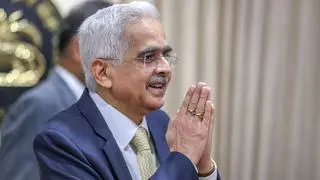The urban growth in mandals in the State has declined by 3.5 per cent during 2001-11 compared with the previous decade, according Census data.
The data has shown wide variations in urbanisation in different mandals. Pedagantyada mandal of Visakhapatnam district has recorded the highest urban growth rate in the State.
“The decadal urban growth rate from 2001 to 2011 in Pedagantyada was 648 per cent which was the highest in comparison with other districts,'' Ms Y.V. Anuradha, Director, Census Operations, Andhra Pradesh, told newspersons here on Thursday after releasing the data.
The level of urbanisation in Andhra Pradesh was 33.49 per cent at 2011 Census which was 6.19 per cent higher than that of 2001.
Warangal mandal of Warangal district showed 44 per cent decline in urbanisation. In terms of population, Vijayawada urban mandal in Krishna district was the most populous district with over 10.34 lakh population while the Maredumilli mandal in East Godavari district had the lowest population at 19,366.
LITERACY
Though literacy rate in the State at 67.66 was higher compared with 60.47 per cent in 2001, its rank in the literacy rate among the States slipped to 31 in 2011 from 28 in 2001.
“We have actually nothing to boast in literacy growth. Though there was steady growth over decades, the pace has been very slow,” Ms Anuradha said.
In urban literacy, Rangareddy district topped with 84.92 per cent while Mahbubnagar continued to be at the bottom with 56 per cent.
The literacy rate in rural areas was 61 per cent as against 54.5 per cent in 2001. The female literacy in the State was 59.74 per cent against the national average of 65.46 per cent.
The sex ratio in the State had increased to 992 from 978 while the child sex ratio declined from 961 to 943.
“At mandal level, the child sex ratio has worsened. Alampur in Mahbubnagar and Chityal in Nalgonda had a ratio of less than 800,” the official added.







Comments
Comments have to be in English, and in full sentences. They cannot be abusive or personal. Please abide by our community guidelines for posting your comments.
We have migrated to a new commenting platform. If you are already a registered user of TheHindu Businessline and logged in, you may continue to engage with our articles. If you do not have an account please register and login to post comments. Users can access their older comments by logging into their accounts on Vuukle.